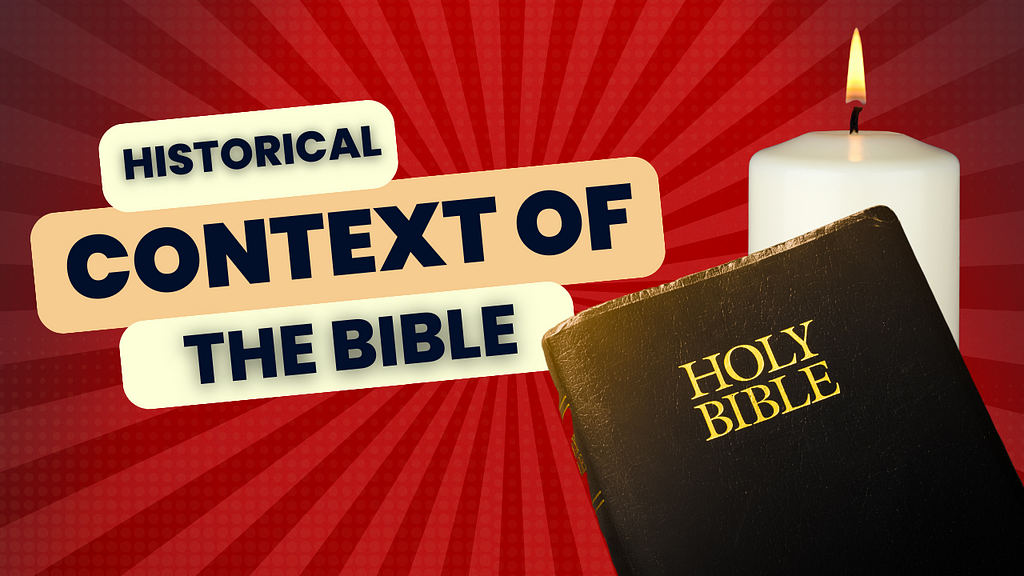
The Bible, revered by billions around the globe, holds a unique and profound place in human history. Its impact on culture, morality, and spirituality is immeasurable. To truly understand the Bible, one must delve into its historical context, exploring the circumstances and events that shaped its various books. In this article, we will journey through time, examining the historical context of the Bible and highlighting key examples that illuminate its significance.
1. Ancient Near East: Setting the Stage
The Bible’s roots lie in the Ancient Near East, a region encompassing present-day Israel, Palestine, Egypt, Mesopotamia, and surrounding areas. The earliest books of the Bible, such as Genesis, were written against the backdrop of Mesopotamian creation myths.
Example: The story of the Great Flood in Genesis finds parallels in the Epic of Gilgamesh, showcasing the interplay of cultural influences in the ancient world.
2. Exodus and the Formation of Israel: A Nation’s Birth
The book of Exodus narrates the liberation of the Israelites from slavery in Egypt. This historical event, marked by Moses leading his people through the Red Sea, is foundational to the identity of Israel. The Exodus is not only a religious narrative but also a historical account that shaped the nation’s collective memory. Archaeological evidence supporting a mass migration from Egypt adds a tangible dimension to this historical context.
Example: The Merneptah Stele, an ancient Egyptian inscription, mentions a group called “Israel” in the region, providing archaeological evidence of the existence of the Israelites in the land of Canaan.
3. The United Monarchy: Kings and Prophets
During the reigns of Saul, David, and Solomon, the Israelites transitioned from a confederation of tribes to a united monarchy. The historical books of Samuel and Kings provide insights into the political, social, and religious developments of this period. David’s triumph over Goliath, an iconic story of the shepherd boy turned king, exemplifies the nuanced historical narratives within the Bible.
Example: The Tel Dan Stele, an ancient inscription, contains the phrase “House of David,” providing extra-biblical evidence of the historical existence of King David.
4. Babylonian Exile: The Challenge of Faith
The Babylonian Exile, a pivotal moment in Jewish history, saw the deportation of the elite to Babylon. The books of Jeremiah and Lamentations express the anguish and reflection of a people grappling with the loss of their homeland. The prophet Ezekiel’s vision of the dry bones coming to life serves as a powerful metaphor for hope amid despair during this period.
Example: The Cyrus Cylinder, a Babylonian artifact, records the decree of King Cyrus allowing the exiled peoples, including the Jews, to return to their homelands, aligning with the biblical account of the end of the Babylonian Exile.
In exploring the historical context of the Bible, we uncover layers of meaning and significance that transcend religious boundaries. The Bible is not just a religious text; it is a tapestry woven with threads of history, culture, and human experience. Whether one approaches it from a faith perspective or as a historical document, the Bible’s enduring impact is undeniable. Understanding its historical context enriches our appreciation for the complexities of the human journey and the timeless narratives that continue to resonate across the ages.
Historical Context of the Bible was originally published in SacredSagasStudio on Medium, where people are continuing the conversation by highlighting and responding to this story.